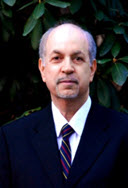ABSTRACT
Establishing a STEM High School (Science, Technology, Engineering, & Mathematics), and the Aiken Environmental, Ohio's first public environmental high school proved to be successful strategies to increase student engagement and raise standardized scores in science. High-poverty urban students from declining academic and disciplinary environments produced significant gains on science test results and credit attainment towards graduation. Using multiple overlapping rigor and SEL strategies, students experienced "science immersion," project-based learning, and a social-emotional curriculum that emphasized personal development and team/community-building skills. Features of the schools included off-campus "intersessions," outdoor adventures, student-led conferencing, and interdisciplinary project-based learning. Methodology includes qualitative analysis through faculty writing/reflection, and analysis of test scores and credits earned towards graduation. Theoretical underpinnings include Richard Louv's nature-deficit (Louv, 2008), social-emotional learning, attachment (Perry, 2005), and instructional immersion/engagement.
INTRODUCTION
Critics of the school reform movement in U.S. public schools have characterized the effort for being long on fresh starts and short on actual research and results. As early as 1966, James Coleman identified ineffective common practices, many of which are still in use. "New" approaches have often consisted of a school or district attempting to muster constantly shifting existing resources to do a more effective version of traditional schooling. In the U.S., this means a post-World War II factory model that has long been acknowledged by educators and the public to be increasingly irrelevant to an increasingly global economy.
A 1983 government report, A Nation At Risk succeeded in raising an alarm bell, but powerful the deference by lawmakers to commercial interests, such as the textbook industry, compromised potential curriculum and structural changes. A rapidly growing entertainment industry, coupled with accelerating technology access, has exacerbated a persistent anti-intellectual culture among youth and their families. International news continues to be in relatively short supply, and knowledge among families and even educators often lacks awareness of international events, dynamics, and changes.
Urban students living in poverty, often suffer the brunt of these effects. The legacy of U.S. slavery is still felt by African-American families, subject to continued individual discrimination and institutional racism. Hispanic and Asian families suffer the stratified views from that history as well. The U.S. welfare system, an economic safety net, provided processed foods for families in need, but not books. Generations of families never gained literacy, or have lost it in the economic struggle.
Student alienation from schooling is common in U.S. high schools. Achievement data from NAEP testing reveals U.S. schools to be non-competitive in international circles, particularly in the disciplines of math & science. Even in middle-class and wealthy suburban high schools, teachers encounter unmotivated and unresponsive students, and many families that do not or cannot provide home support for learning.
Criticism has also extended to teacher preparation and support; prospective teachers in math and science fields are often drawn to industry, where salaries and professional conditions are better. Inner-city high schools, short on supplies and qualified teachers, often graduate students with few or no significant lab experiences in science. Poor preparation in math and science render urban students at a serious competitive disadvantage for college preparation, even among their American peers.
With respect to mathematics, American parents are notorious for making statements to their children that communicate low expectations of understanding and performance. Math phobia is common and accepted, and reinforced in daily conversation among students, parents, and even teachers. Statements such as "Just do the best you can on the math, I was never that good at it myself..." are stated and acknowledged with a laugh in school conferences and family and social conversation in the U.S. In some cultures, these statements would be rare, unheard of, or publicly contradicted.
In spite of these obstacles, urban educators in the U.S. can be very inventive and dedicated. They often band together with huge energy in an effort to improve their schools or found new ones that work better for kids. As the environmental movement has gained ground in the U.S., city teachers have experimented with strategies to engage and motivate their charges by re-connecting them with nature and a mission to save the planet.
Class differences between teachers and students can mean a great divide on environmental awareness, nutritional access, and marketing messages. Most teachers in the U. S. cities are homeowners, while most of their students live in apartments. Recycling access often differs for these, with recycling habits now common among homeowners and the middle class, but with systems for the poor that are strictly throwaway/landfill/garbage collection-oriented. Excessive packaging and processing of foods, and lack of transportation mean that many poor families are trapped in "food deserts.* Michelle Obama's recent initiatives to bring fresh market produce models to these areas opens up a whole new avenue of science discovery, research, and potential action projects for high school students.
Urban educators in the U.S. are beginning to see the instructional and motivational opportunities in this scenario, and respond with inventive ideas. In Cincinnati, a Midwestern city in Ohio, his has taken the form of many teacher-initiated class projects, and the establishment of two different schools with specific focus on environmental and STEM strategies (science, technology, engineering & mathematics).
The potential for establishing effective and engaging schools with teenagers is seen in the marriage of high academic expectations with student development and empowerment. Effective schools have been established in the reform movement with one or the other of these, however, the most persistently low performing schools and districts have not until recently seen the opportunity that lies in deliberately doing both. There are two recent examples of these strategies in use, Hughes STEM High School and Aiken High School in Cincinnati, Ohio.
AIKEN UNIVERSITY HIGH SCHOOL
. . .Continue to read rest of article (PDF).










